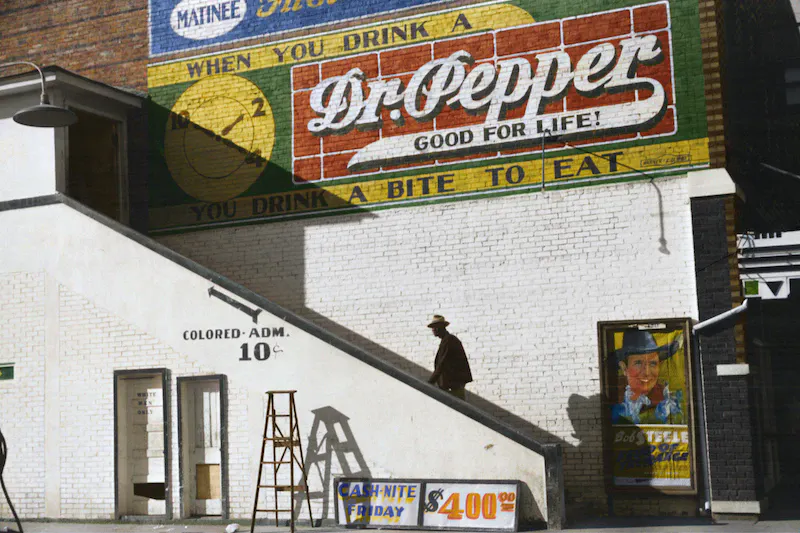The History of Slavery: From Hunter-Gatherers to Farmers

The History of Slavery: From Hunters-Gatherers to Farmers
About 11,000 years ago, during the Neolithic Revolution, agriculture was invented. Suddenly, people who were once hunters and gatherers became farmers, and this brought about significant changes in the way societies were organized.
As the population density increased and economies became more robust with farming, a new system of labor management emerged. Those who did the work were managed by other people who were tasked with managing them. This led to a division of labor, and some individuals became more powerful than others.
The shift to agriculture led to the creation of slavery. People who were once free became enslaved, and their lives were no longer their own. Instead, they were forced to work for others, often without compensation or any hope of freedom.
Slavery became more prevalent as societies became more complex, and wealth became concentrated in the hands of a few. In ancient Greece and Rome, slaves were used to work in mines, on farms, and in households. They were considered to be property and had no legal rights.
Slavery was also used extensively in the Americas. European colonizers brought millions of enslaved Africans to work on plantations. These slaves were subjected to brutal treatment, and their lives were cut short by the harsh conditions they were forced to endure.
Today, slavery still exists in various forms, and it is important for us to understand its history and how it has impacted society. While we may no longer have legal slavery, human trafficking and forced labor continue to be major problems around the world. As a society, we must work together to put an end to these practices and ensure that everyone is treated with dignity and respect.
The Evolution of Slavery: From Hunters-Gatherers to Farmers
Around 11,000 years ago, during the Neolithic Revolution, humans discovered agriculture which brought about significant changes in their way of life. With agriculture, people settled down in one place, which led to the formation of robust economies and increased population density. As a result, some people had to work while others managed them.
This new way of living transformed the hunter-gatherers into farmers and created a distinction between different social classes. It also laid the foundation for the emergence of slavery as an institution. As society became more complex, people with power and influence started owning slaves, who were forced to work for them.
The first slaves were typically war captives or individuals who were unable to pay their debts. In ancient Greece and Rome, slaves were treated as property and could be bought and sold like any other commodity. Slavery became an integral part of the economy and the society, and it continued to exist for centuries.
The transatlantic slave trade that took place from the 16th to the 19th century saw millions of people from Africa being forcibly transported to the Americas to work as slaves. This period is considered one of the darkest chapters in human history, and it had a profound impact on the world we live in today.
However, slavery did not end with the abolition of the transatlantic slave trade. It still exists today in different forms, such as forced labor, sex trafficking, and child exploitation. The term “human trafficking” is often used to describe these activities, which involve the exploitation of vulnerable individuals for profit.
As a society, it is our responsibility to recognize and take action against modern-day slavery. We must educate ourselves and learn to identify the signs of trafficking in our communities. By working together and supporting organizations that combat human trafficking, we can make a difference and help put an end to this inhumane practice.
The Shocking Reality of Human Trafficking Today
Once upon a time, about 11,000 years ago, during the Neolithic Revolution, agriculture was invented, which led to increased population density and a robust economy. With farming, people who do the work and people who manage those workers emerged. This marked a shift from a hunter-gatherer society to an agrarian one. However, this development had some adverse consequences that we still grapple with today.
Human trafficking is one of the unfortunate outcomes of the Neolithic Revolution. Despite our progress, human trafficking is still a reality, and we often turn a blind eye to it. We tend to think of human trafficking as an innocuous term, conjuring up images of people riding trains or sitting in traffic jams. However, the reality is that it is a horrific crime that affects millions of people around the world.
The term “human sex trafficking” is often used to describe this crime, and it’s also called the commercial sexual exploitation of children. We try to hide the hideousness of the crime behind acronyms such as CSEC or DMST, but the fact remains that it’s a massive problem. According to statistics, $45 million is spent per year on online sex trafficking alone in the US. Moreover, 21 million people are enslaved globally, and 300,000 US children are at risk for human trafficking every year.
As a physician, I have seen firsthand the devastating effects of human trafficking. The victims and their stories have impacted me more than any number ever could. However, it’s not just up to healthcare professionals to stop human trafficking. We all have a role to play, and it starts with being aware of the signs and knowing how to respond when we see them.
We have to act, and it’s not always easy. It takes courage, training, and support. But we cannot turn a blind eye to the signs of human trafficking that are right in front of us. It’s not enough to see; we have to act, even if it means being ridiculed. We can make a difference by supporting organizations such as GEMS, PATH, Dawn’s Place, Sanctuary for Families, and Covenant House, which offer services to trafficked youth. Moreover, HEAL is an academic source for people in law enforcement and medicine who work on the issue of human trafficking. By standing up and stepping in, we can help put an end to this crime.
The Evolution of Human Trafficking: From Innocuous Words to Horrific Reality
11,000 years ago, during the Neolithic Revolution, the invention of agriculture led to the growth of population density and a robust economy, which led to the need for workers and managers. This, in turn, created an opportunity for slavery to emerge. Fast forward to today, we don’t talk about slavery directly anymore. Instead, we use the term “human trafficking” or “commercial sexual exploitation of children.” However, despite these seemingly innocuous terms, human trafficking is a horrific reality that affects millions of people globally.
The numbers surrounding human trafficking are staggering. $45 million is spent per year on online sex trafficking in the US alone, and 21 million people are enslaved globally. Shockingly, 300,000 US children are at risk of human trafficking each year, with the average age of victims being 15 years old. However, the numbers are likely the tip of the iceberg, as traffickers are known to morph and hide in plain sight, making them difficult to detect.
As a physician, I learned about human trafficking through my work with patients. One particular case stands out in my memory: a woman who had a dollar sign tattooed in her groin. It was a missed opportunity for me and my team to identify her as a trafficking victim. It taught me a valuable lesson - the eye doesn’t see what the mind doesn’t know.
It’s not enough to simply see the signs of human trafficking; we need to act. As healthcare professionals, we must learn about human trafficking and make it our business to identify and assist victims. Sadly, many victims go unnoticed, living among us and seeking medical care. We must have the courage to ask the tough questions and act accordingly.
There are organizations out there dedicated to helping victims of human trafficking, such as GEMS, PATH, HEAL, and many others. It’s important to support these organizations and spread awareness of human trafficking, a reality that affects millions of people around the world.
The Rise of Slavery in Civilization
Slavery has been a part of human history for thousands of years, dating back to prehistoric times. However, it was the development of agriculture that led to the rise of slavery as we know it in civilization.
As early humans transitioned from hunting and gathering to farming, they needed more labor to tend to their crops and animals. This led to the enslavement of captured enemy soldiers and conquered peoples, who were then forced to work in fields and mines.
Over time, slavery became more institutionalized, with laws and social customs emerging to support the practice. In ancient Greece and Rome, for example, slaves were a crucial part of the economy and were owned by many households.
Slavery persisted throughout the Middle Ages and into the modern era, with European powers relying on the slave trade to fuel their colonization of the Americas. Millions of Africans were forcibly taken from their homes and transported to the New World to work on plantations, creating immense wealth for their owners.
Today, slavery is illegal in every country, yet it still exists in various forms such as forced labor, debt bondage, and human trafficking. While the world has made progress in eradicating slavery, there is still much work to be done to ensure that every person is free and protected from exploitation.
The History of Slavery: From Hunter-Gatherers to Farmers
Slavery has been a part of human history for thousands of years, dating back to ancient civilizations such as Egypt and Greece. But where did it all begin? According to the original speaker’s memories, slavery may have originated from the transition from hunter-gatherer societies to agricultural societies.
As humans began to settle down and grow crops, they needed a reliable workforce to tend to the fields. This led to the practice of capturing and enslaving people from neighboring tribes, who were then forced to work on the farms. As agriculture became more widespread, so did the practice of slavery.
Over time, slavery evolved into a complex system of social and economic control, with slaves being used not just for agricultural labor but also for mining, construction, and other forms of work. Slaves were considered property and had no legal rights or protections.
The institution of slavery persisted for centuries, with different societies having varying attitudes and laws regarding slavery. In some cases, slaves were able to gain their freedom through manumission or other means, while in others, slavery was an integral part of the economy and society.
It wasn’t until the 19th century that widespread abolition movements began to gain traction, leading to the eventual end of legal slavery in many countries. However, the legacy of slavery still lingers in many parts of the world, with systemic racism and inequality continuing to affect marginalized communities.
As we reflect on the history of slavery, it’s important to acknowledge the many ways in which it has shaped our world and to work towards creating a more just and equitable society for all.
The History of Slavery: From Hunters-Gatherers to Farmers
Slavery has been a part of human history for thousands of years. It existed in various forms in many different societies, and its origins can be traced back to prehistoric times. In the early days of human civilization, slavery was primarily a result of warfare. People who were captured in battle were often enslaved by their captors.
As societies developed and agriculture became the main source of food, slavery took on a new form. With the rise of farming, the need for labor grew. In some societies, slaves were used to grow crops and tend to livestock. This form of slavery was often hereditary, meaning that children born to enslaved parents would also be enslaved.
In ancient civilizations such as Greece and Rome, slavery was a widespread practice. Slaves were used for a variety of tasks, from manual labor to skilled trades. They were owned by individuals or families and could be bought and sold on the open market.
During the Middle Ages, slavery continued to be an important part of society. In Europe, slaves were often used as domestic servants or in the production of goods such as textiles. The transatlantic slave trade, which began in the 16th century, saw millions of Africans forcibly taken from their homes and transported to the Americas to work on plantations.
Slavery was officially abolished in the United States in 1865 with the passage of the 13th Amendment to the Constitution. However, it still exists in various forms around the world today, including forced labor and human trafficking.
Understanding the history of slavery is important in order to recognize its impact on society and to work towards creating a more just and equitable world. By learning about the origins and evolution of slavery, we can better understand the complex issues surrounding it and work towards eradicating it in all its forms.
The History of Slavery: From Hunter-Gatherers to Farmers
Slavery has been a part of human history for thousands of years, and its origins can be traced back to the earliest human societies. In fact, it is believed that slavery existed in some form or another in virtually every civilization throughout history.
The earliest forms of slavery were likely practiced by hunter-gatherer societies. In these societies, it was common for groups to go to war with one another, and captives were often taken as slaves. These slaves were used for labor, and were typically treated as property rather than people.
As human societies became more complex and agriculture emerged, the practice of slavery evolved as well. In agricultural societies, slaves were used for a variety of tasks, including farming, mining, and domestic labor. These slaves were often seen as a valuable source of labor, and were traded and sold like any other commodity.
One of the most significant examples of slavery in history is the transatlantic slave trade, which began in the 16th century. This practice involved the forced transportation of millions of Africans to the Americas, where they were sold into slavery and forced to work on plantations.
While slavery has been officially abolished in most parts of the world, it is still practiced in some form in many countries. In many cases, slavery is a hidden practice, with workers being exploited and forced to work under harsh conditions with little or no pay.
The history of slavery is a dark and complicated one, and its legacy continues to be felt around the world today. By understanding the origins and evolution of slavery, we can work to create a more just and equitable society for all people.
Conclusion
The history of slavery is a complex and often uncomfortable topic, but it is important to understand how it has evolved over time. From the earliest forms of slavery practiced by hunter-gatherer societies to the more systematic and widespread slavery of agricultural societies, it is clear that slavery has been a constant presence in human history.
While many people today believe that slavery has been abolished, it is unfortunately still a reality in many parts of the world. It is important to acknowledge this fact and work towards ending all forms of slavery, including modern-day forms such as forced labor and human trafficking.
By understanding the history of slavery and its many forms, we can better understand the impact it has had on societies and individuals throughout history. This knowledge can also help us work towards a future where all people are treated with dignity and respect, free from the chains of slavery.




